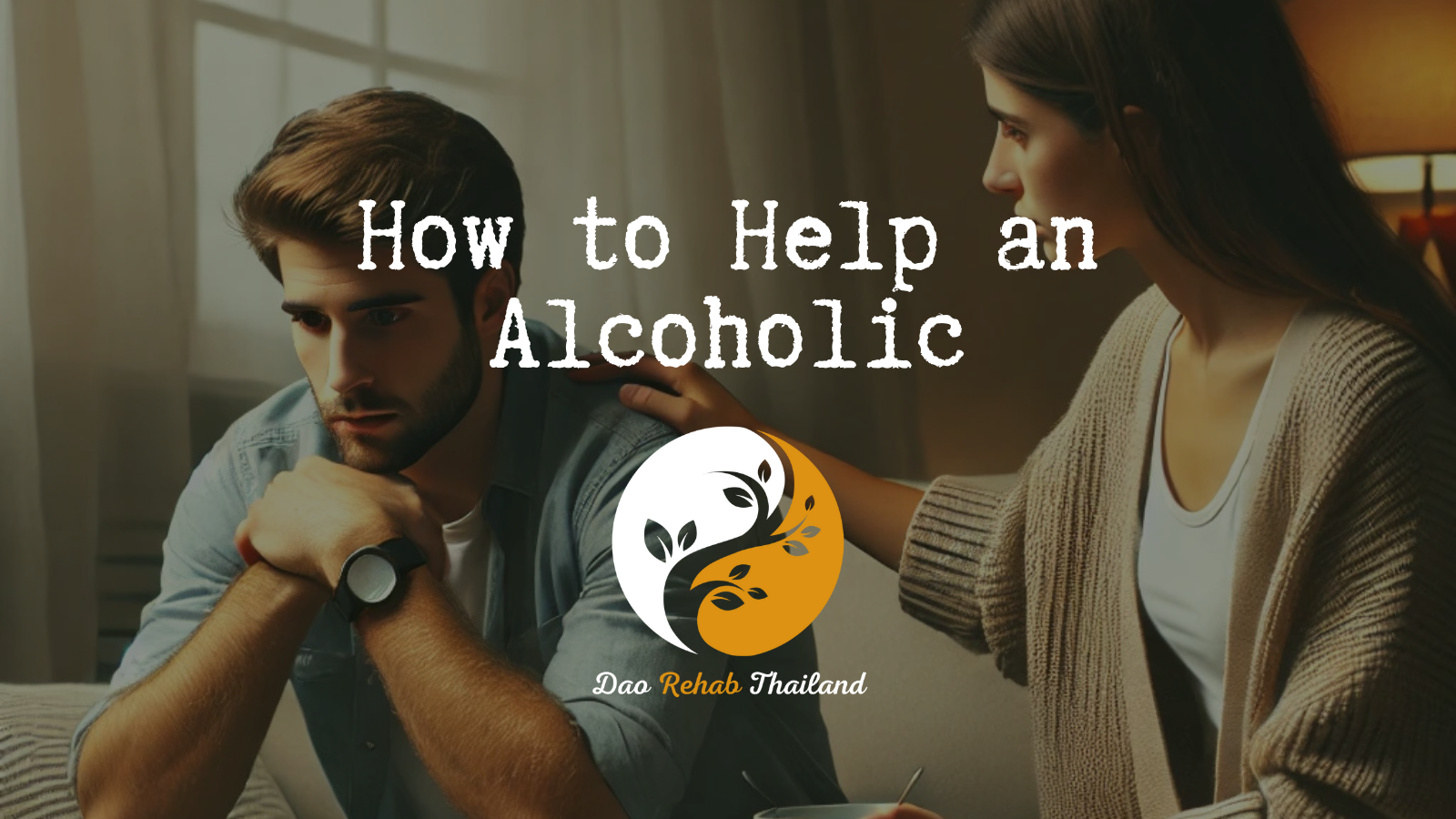
Xanax withdrawal-Holistic rehab in Thailnd
Xanax withdrawal
“Turning the impossible into possible”

"Detox from Drugs at a Luxury Holistic Center in Thailand and Israel"

Xanax withdrawal
Xanax (Alprazolam) is a benzodiazepine drug widely used to treat anxiety and panic disorders. It was developed by the American pharmaceutical company Upjohn Company, and is currently manufactured by several different companies under different brand names, with “Xanax” being one of the most common names.
"Holistic Center for Trauma, Addiction, and Mental Imbalance Treatment in Thailand"
“Come to the beginning of your journey to freedom from addiction to alcohol, drugs, and pills, and rediscover your life within the serene embrace of DaoTherapy Rehab in Thailand—where holistic healing meets empowering recovery.”
DaoTherapy Holistic Rehab
Key Elements of Drugs Detox:
Medical Supervision: Drugs detox must be conducted under medical supervision, as the body may experience withdrawal symptoms. These can include nausea, anxiety, muscle aches, and insomnia. A medical team will monitor and manage these symptoms to ensure the patient’s safety and comfort.
Holistic Therapies:
Holistic Therapies: Many detox programs incorporate holistic therapies such as mindfulness, yoga, and meditation to help individuals cope with stress and anxiety during the detox process. These therapies support the mind-body connection and contribute to overall recovery.
Tapering Process
Tapering Process: Drugs detox often involves a gradual tapering of the drug to reduce withdrawal severity. Doctors will slowly decrease the dosage over time to allow the body to adjust to lower levels of the substance.
Psychological Support:
Psychological Support: Like any addiction recovery process, detox from Drugs includes psychological support. This can involve counseling, therapy, or support groups to address the mental and emotional aspects of addiction.
Post-Detox Treatment:
Post-Detox Treatment: After completing detox, continuing treatment is crucial to prevent relapse. This often includes participation in ongoing therapy, group support, and the development of new coping strategies to maintain sobriety.
Xanax mechanism of action
Alprazolam works by increasing the activity of a neurotransmitter called GABA (Gamma-Aminobutyric Acid) in the brain. GABA is a neurotransmitter that inhibits nerve activity, which helps reduce anxiety and induce a sense of calm. Alprazolam binds to GABA receptors in the central nervous system, leading to a reduction in nerve activity and a calming and sedative effect.
Medical Uses of Xanax
1. Anxiety Disorders: Alprazolam is approved for use in the treatment of generalized anxiety disorder. It helps reduce symptoms of anxiety such as feelings of tension, excessive worry, and sleep disturbances.
2. Panic Disorders: Alprazolam is one of the most common medications used to treat panic disorders, including panic accompanied by agoraphobia (fear of open spaces).
3. Other Anxieties: In some cases, Alprazolam is also used to treat other anxiety disorders, including separation anxiety and social anxiety, although its use in these conditions is less common.
Side Effects of Xanax
Like any medication, Alprazolam can cause side effects. The most common of which include:
– Drowsiness and fatigue
– Dizziness
– Difficulty concentrating
– General weakness
– Sleep disturbances
Dangers and Dependence of Xanax
Long-term use of Alprazolam can cause physical and psychological dependence. Dependence can lead to the need for higher doses to achieve the same effect, as well as withdrawal symptoms when use is stopped. Withdrawal symptoms can include increased anxiety, tremors, seizures, and even life-threatening conditions.
Warnings and Interactions
– Drug Interactions: Alprazolam can interact dangerously with other medications, including antidepressants, opioid painkillers, and alcohol.
– Warnings: Alprazolam is not recommended for use during pregnancy or breastfeeding without proper medical advice. The drug can affect the fetus or infant.
Summary
Xanax (Alprazolam) is an effective medication for treating anxiety and panic disorders, but it should be used with caution and under medical supervision because of the potential for dependence and side effects. Use of Xanax should be part of a comprehensive treatment plan that includes psychological counseling and other treatments to improve mental health.

contact us
Contact us with your questions
We would love to speak with you! Feel free to reach out with any questions.

get in touch
Schedule a free consultation
Schedule a free consultation with our team and let’s make things happen!
The scope of use of Xanax (Alprazolam) worldwide and in Israel
Global Use
The use of Xanax, also known by its active ingredient Alprazolam, is very widespread worldwide, especially in the United States. In 2021, there were approximately 15.4 million prescriptions for Alprazolam in the United States alone. Xanax use is expanding to all segments of the population, including both adults and young adults, although use in the older population tends to be higher (Benzodiazepine Information Coalition) (NCDAS).
Problems of Dependence and Misuse
One of the biggest challenges with the use of Alprazolam is the high potential for developing dependence and addiction. According to data from addiction treatment centers, about two million Americans over the age of 12 reported using Xanax improperly in 2016. The drug can cause physical and psychological dependence, and abrupt cessation of use can cause severe withdrawal symptoms such as anxiety, insomnia, and seizures (DrugAbuse.com) (Benzodiazepine Information Coalition).
Use of Xanax in Israel
In Israel, the use of alprazolam is also common, especially for the treatment of anxiety and panic disorders. Although there is no accurate, up-to-date data on the number of prescriptions in Israel, it can be estimated that its use is similar to that in other Western countries. The use of alprazolam is controlled by the Ministry of Health, and the drug is available only with a doctor’s prescription.
Summary
The use of Xanax (Alprazolam) is very common both internationally and in Israel, especially for the treatment of anxiety and panic disorders. However, care must be taken to ensure proper and controlled use in order to prevent dependence and addiction, and to avoid sudden discontinuation of the medication.
Xanax withdrawal symptoms
Withdrawal symptoms from alprazolam (Xanax) can be severe and varied, and include both physical and mental symptoms. The risk of withdrawal symptoms is especially high in people who use the drug in high doses or for a long period of time. Here is a list of common withdrawal symptoms:
Physical Symptoms
1. Tremors: Shaking in the hands or throughout the body.
2. Muscle cramps: Muscle spasms and pain.
3. Hyperhidrosis: Excessive sweating, especially at night.
4. Nausea and vomiting: Feeling sick and sometimes vomiting.
5. Insomnia: Difficulty falling or staying asleep.
6. Headaches: Severe headaches.
7. Dizziness: Feeling dizzy and having trouble keeping your balance.
8. High blood pressure: Increased blood pressure.
Mental symptoms
1. Increased anxiety: A strong and persistent feeling of anxiety.
2. Depression: A feeling of depression and deep sadness.
3. Irritability: A high level of nervousness and irritability.
4. Confusion: A feeling of confusion and difficulty concentrating.
5. Psychotic symptoms: In severe cases, psychotic symptoms such as hallucinations may appear.
6. Panic: Sudden panic attacks.
7. Agitation and nervousness: Inability to relax and a constant feeling of tension.
Severe symptoms
1. Seizures: Seizures or convulsions, which can be life-threatening.
2. Hallucinations: Sensory experiences that are not real, such as hearing voices or seeing things that are not there.
3. Delirium: Severe confusion, unconsciousness, and disorganized thinking.
Treating Withdrawal Symptoms
It is important to treat withdrawal symptoms in a supervised manner by medical professionals. The withdrawal process usually involves gradually reducing the dosage to prevent severe withdrawal symptoms. In severe cases, hospitalization for intensive care and psychological and medical support may be required.
Taotherapy is a multidisciplinary treatment method that focuses on treating addictions:
Taotherapy is a multidisciplinary treatment method that focuses on treating addictions and mental health problems through a holistic approach combined with spiritual, psychological and physiological principles. The method is based on principles of the Chinese philosophy of “Tao”, which emphasizes balance and harmony between the body, mind and spirit. Here is an overview of the Taotherapy method for addiction recovery and treatment:
Basic principles of Taotherapy
1. Balance and harmony:
– Taotherapy focuses on achieving balance and harmony between all components of the person: body, mind and spirit. The assumption is that an imbalance between these components leads to addictions and mental health problems.
2. Tao principles:
– The method is based on the principles of Tao (Way), which guide the patient to strive for a balanced and harmonious life. The Tao philosophy emphasizes living simply, humbly and in accordance with the natural flow of life.
3. Body, Mind, and Spirit:
– Taotherapy sees the person as a whole and integrated whole, and does not focus only on the symptoms of addiction but also on the deeper roots of the problem, such as past traumas, unprocessed emotions, and psychological difficulties.
Components of Taotherapy treatment
1. Spiritual techniques:
– Meditation: Meditation is used as a central tool for treatment, and its goal is to achieve inner calm, mental and spiritual balance, and reduce tension and stress.
– Breathing exercises: Exercises that aim to improve a person’s ability to control breathing and strengthen the connection between the body and mind.
2. Psychological techniques:
– Cognitive-behavioral therapy (CBT): The principles of cognitive-behavioral therapy are combined with the principles of Tao to change harmful thought and behavior patterns.
– Trauma therapy: Working on processing past traumas and releasing unprocessed emotions that can contribute to addiction.
3. Physical activity:
– Yoga and Qi Gong: These practices combine movement, breathing and internal awareness, and aim to strengthen the body, calm the mind and create a sense of balance and harmony.
– General physical activity: Regular physical activity improves physical and mental health and reduces the need for addiction.
4. Proper nutrition:
– Balanced diet: Taotherapy emphasizes the importance of a balanced and healthy diet as a tool for improving physical and mental health.
Advantages of Taotherapy in the treatment of addictions
1. Holistic approach: The method treats the patient as a whole and not just the symptoms, which allows dealing with the roots of the problem.
2. Combination of different techniques: Taotherapy combines a wide range of spiritual, psychological and physiological techniques, which increases the effectiveness of the treatment.
3. Improved quality of life: By achieving balance and harmony, patients experience significant improvements in their quality of life, physical health, and sense of well-being.
Summary
Tao Therapy is a holistic treatment method that combines spiritual, psychological, and physiological principles to treat addictions and mental health problems. The method focuses on balance and harmony between the body, mind, and spirit, and incorporates techniques such as meditation, breathing exercises, cognitive-behavioral therapy, yoga, and qigong, and proper nutrition. The holistic approach of Tao Therapy allows for deep and effective treatment of the roots of addiction and improves the quality of life of patients.
Psychological Support:
Psychological Support: Like any addiction recovery process, detox from Subutex includes psychological support. This can involve counseling, therapy, or support groups to address the mental and emotional aspects of addiction.
The future is here - training therapists in the Taotherapy method for addictions and trauma from the population of clean addicts
Training addiction therapists from the clean addict population is an effective and beneficial approach, mainly due to the personal understanding and vital experience that these therapists have. Taotherapy, with its holistic and spiritual approach, emphasizes the importance of a personal connection and a deep understanding of the detoxification and rehabilitation processes. Here are some important aspects of training addiction therapists among clean addicts using the Taotherapy method:
Benefits of training therapists from the clean addict population:
1. Personal understanding and experience:
– Personal experience: Therapists who have gone through the addiction and detoxification process themselves understand their patients deeply and are able to connect with them on a personal level.
– Inspiration and personal example: Clean addicts can serve as a living example for patients, showing them that it is possible to overcome addiction and live a healthy and fulfilling life.
2. Empathy and Credibility:
– Strong Empathy: Therapists can demonstrate genuine empathy and build strong trusting relationships with patients, as they understand the challenges and difficulties they face.
– Credibility and Authenticity: The therapists’ personal experiences add to their credibility in the eyes of patients, making it easier to build a successful therapeutic relationship.
3. Empowerment and Inspiration:
– Empowerment Process: Training therapists from the clean addict population allows clean addicts to go through a personal empowerment process and serve as leaders in their community.
– High Motivation: These therapists tend to be highly motivated to contribute and help others, out of a sense of personal mission and a desire to help people in similar situations.
The Taotherapy Training Process
1. Theoretical Studies:
– Psychology of Addiction: Theoretical training on topics such as psychological mechanisms of addiction, withdrawal symptoms and psychological consequences.
– Principles of Taotherapy: Study of the principles of Taotherapy, including Tao philosophy, meditation, breathing techniques and body-mind-spirit balance.
2. Practical Training:
– Workshops and Practices: Participation in practical workshops that include practice of various therapeutic techniques, such as cognitive-behavioral therapy, yoga and qigong.
– Practical Experience: Practical work under supervision in treatment centers, including individual and group therapy.
3. Development of Personal Skills:
– Interpersonal Skills: Development of communication skills, empathy and understanding of patients’ needs.
– Self-Management: Tools for self-management, coping with stress and maintaining personal balance as therapists.
4. Support and continued development:
– Guidance and support: Receive guidance and support from experienced therapists throughout the training process and beyond.
– Continued professional development: Encourage participation in additional professional training and training for continued professional development.
Summary
Training addiction therapists from the clean addict population in Taotherapy offers a unique and empowering approach to treatment. These therapists bring with them deep understanding and personal experience, high empathy and credibility, and a strong desire to help others. The training process includes theoretical studies, practical training, development of interpersonal and self-management skills, and ongoing guidance. This approach allows clean addicts to serve as leaders in the community and contribute significantly to the rehabilitation and healing of other patients.
Thought provoking questions:
1. Have you ever felt that you live in constant fear? What was the main reason for this?
2. How did you feel when you realized that the fear comes from the mind and is not real? Did it change your perspective?
3. Have you tried to apply these ideas in your life? What were the main challenges?
4. From the awareness experience for you? How is it different from the normal experience of life?
5. How do you intend to take responsibility for realizing awareness in your life from now on?








